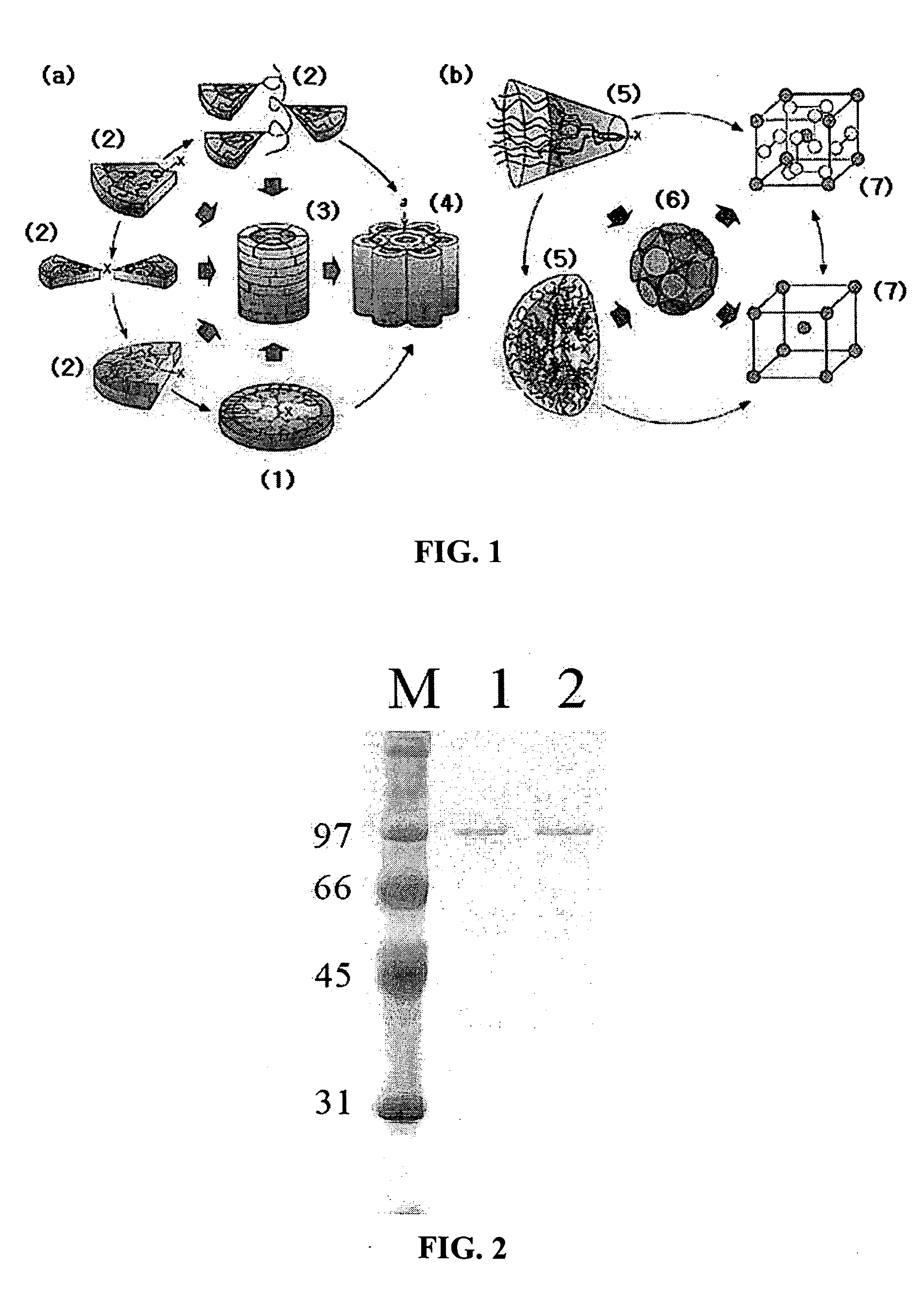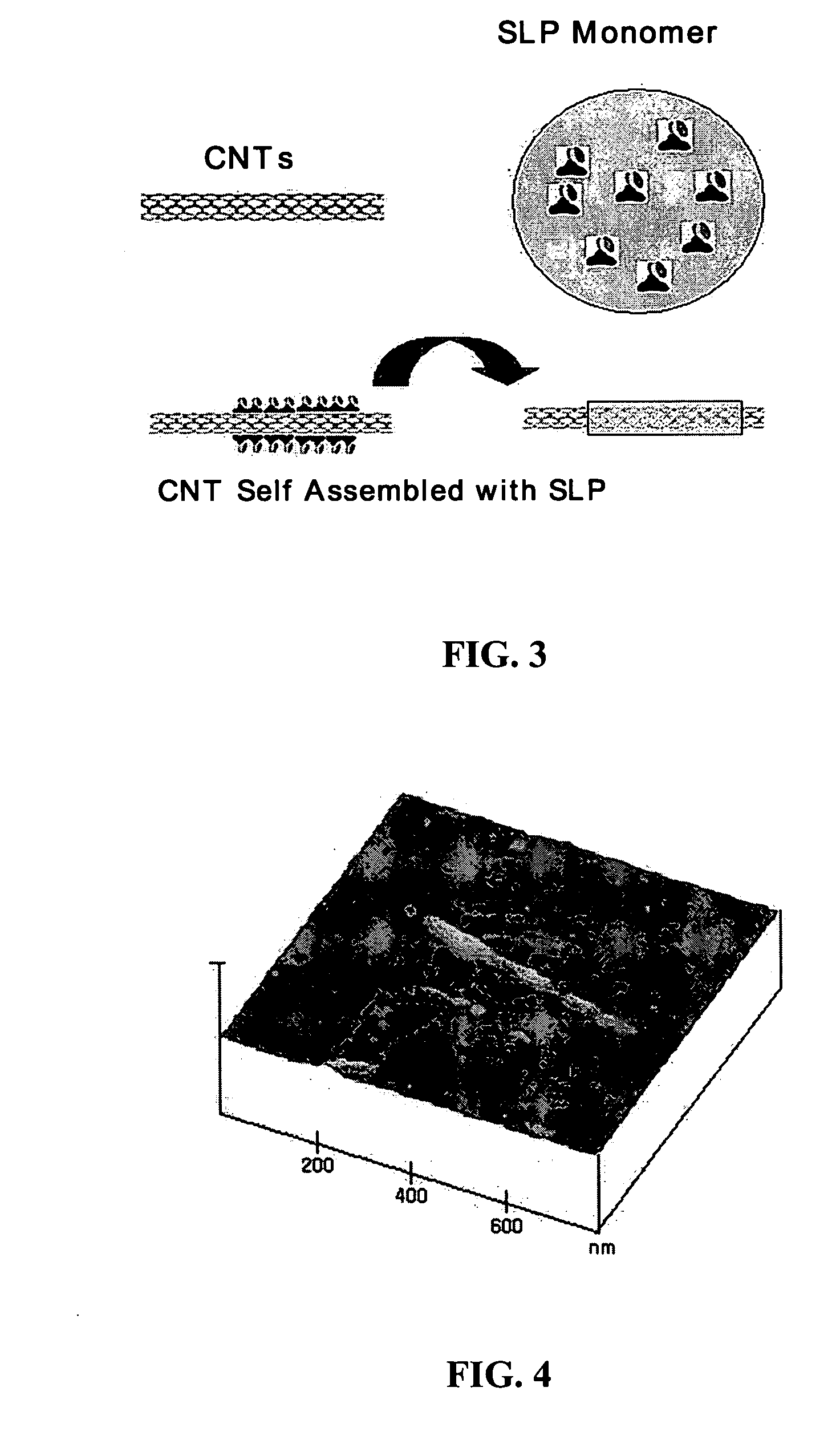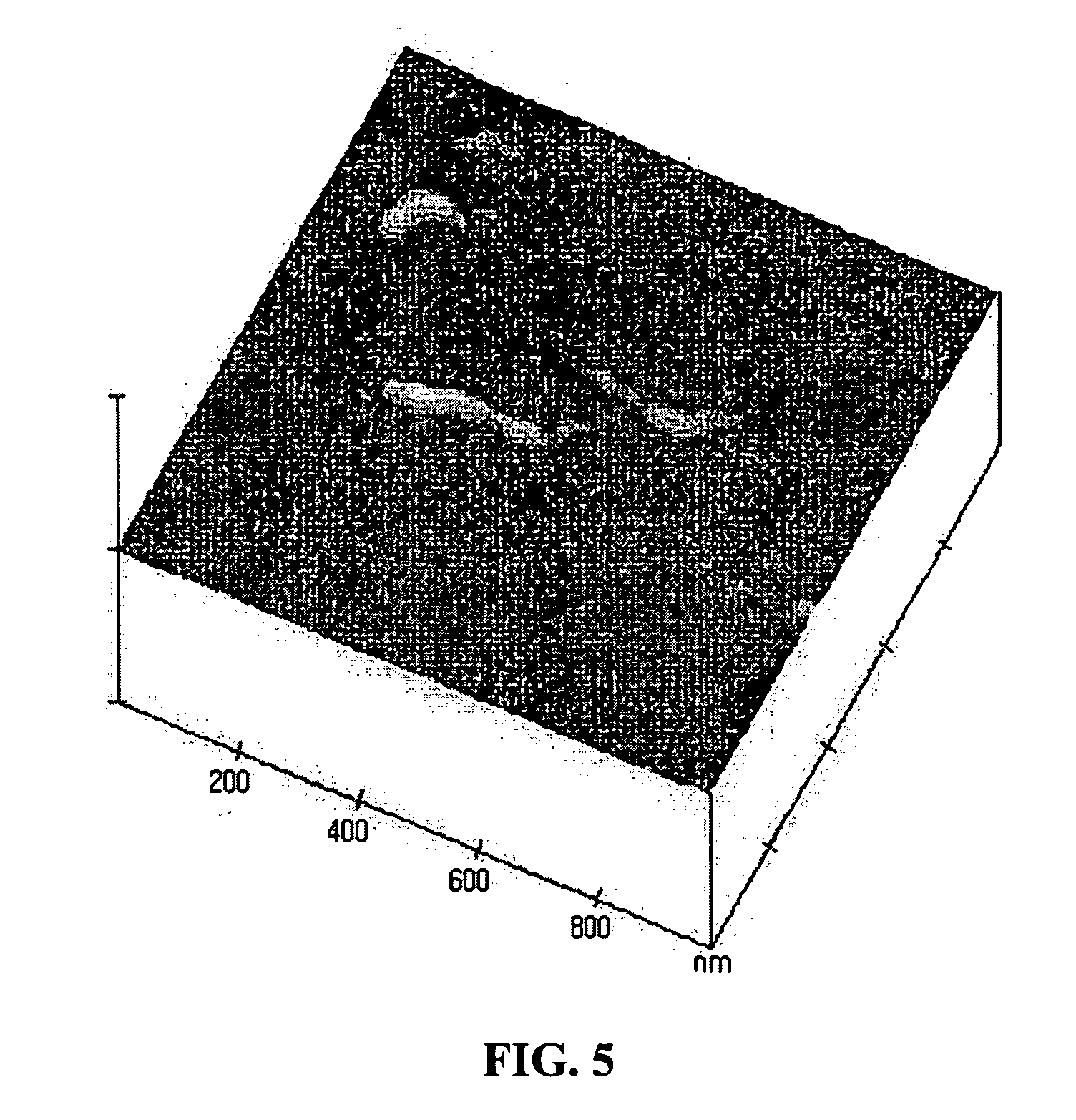Method for preparing a water-soluble carbon nanotube wrapped with self-assembly materials
- Summary
- Abstract
- Description
- Claims
- Application Information
AI Technical Summary
Benefits of technology
Problems solved by technology
Method used
Image
Examples
example 1
Preparation of SLP
[0047] Firstly, the production of SLP was confirmed in various bacteria (Aeromonas salmonicida, Aeromonas hydrophila, Geobacillus stearthermophilus, Bacillus stearthermophilus, etc.) to find new bacteria capable of effectively producing SLP which can be nano self-assembled. As a result of SDS-PAGE analysis of various cultured species, it was revealed that the most efficient species in respect of SLP production is Geobacillus stearothermophilus, which can be cultured at high temperature.
[0048] For mass production of SLP, Geobacillus stearthermophilus (KCTC 2107) was cultured at high concentration. The above species is one of hyperthermophilic gram positive bacteria whose appropriate culturing temperature is 55° C., which is very high. Such a hyperthermophilic bacterium has not been cultured at high density. The high density culture was performed using R / 2 medium at 55° C. Feeding solution containing 500 g / L glucose, 50 g / L yeast extract, and 15 g / L MgSO4.7H2O was ...
example 2
Preparation of CNT Wrapped with SLP
[0051] In the present invention, CNT from CarboLex Inc. was used after being isolated and purified (Rao et al., Science, 275:187, 1997). The purified SLP in the Example 1 was mixed with 100 μg of CNT which was pre-suspended in 20 mM citrate buffer (pH 4.0) to make the final concentration of the SLP 1 mg / mL, and then the mixture was left at room temperature for 10 hours to induce self-assembly reaction (FIG. 3). SLP has a property of self-assembling on hydrophobic CNT, so that water-soluble CNT wrapped with SLP can be fabricated easily without any special condition.
[0052] After completing reaction, the SLP-CNT reaction product was washed with distilled water for 5 min at 6000 rpm three times, and 20 μl of SLP-CNT reaction product was dropped on a silicone wafer. The wafer was centrifuged at 3000 rpm for 30 seconds under vacuum condition.
example 3
Confirmation of CNT Wrapped with SLP
[0053] To confirm the presence of SLP-CNT reaction product prepared by biological self-assembly in the Example 2, the image was examined by the following method. AFM analysis was carried out with the NanoScope III MultiMode system (Digital Instruments) operated on tapping mode to be analyzed in the air, and a NanoProbe TESP was used as a tip. Typically, the contact mode is difficult to be applied in analysis of soft samples, so that the tapping mode is used to overcome the difficulty. Non-contact mode operation is also used, in which an image is obtained in consideration of the attraction between a sample and a probe. Occasionally the tapping mode is called a dynamic mode, and the non-contact mode includes both non-contact mode and dynamic mode. At the time of analyzing, frequency was 240-280 kHz and scanning rate was 1.97 Hz.
[0054]FIG. 4 and FIG. 5 are the images showing the result of AFM analysis of CNT wrapped with SLP. The scanning size was ...
PUM
| Property | Measurement | Unit |
|---|---|---|
| Solubility (mass) | aaaaa | aaaaa |
| Water solubility | aaaaa | aaaaa |
Abstract
Description
Claims
Application Information
 Login to View More
Login to View More - R&D
- Intellectual Property
- Life Sciences
- Materials
- Tech Scout
- Unparalleled Data Quality
- Higher Quality Content
- 60% Fewer Hallucinations
Browse by: Latest US Patents, China's latest patents, Technical Efficacy Thesaurus, Application Domain, Technology Topic, Popular Technical Reports.
© 2025 PatSnap. All rights reserved.Legal|Privacy policy|Modern Slavery Act Transparency Statement|Sitemap|About US| Contact US: help@patsnap.com



